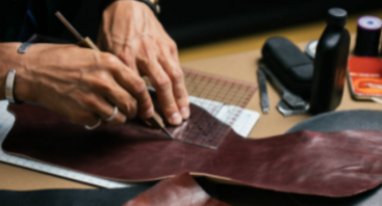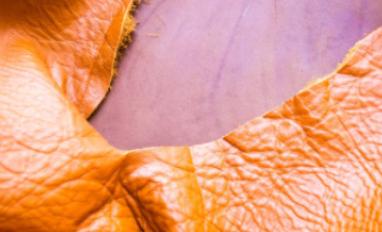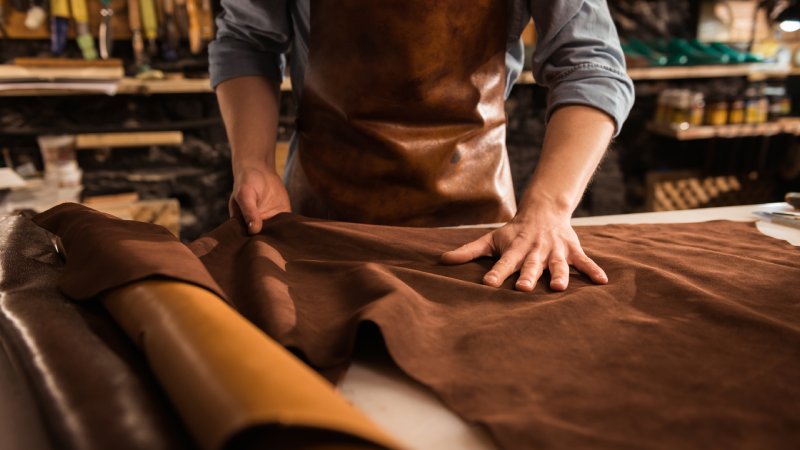6 Differences Between Real Leather vs Vegan Leather
One of the most common questions I have gotten when it comes to leather care is whether the same techniques can be applied across real leather and vegan leather. I have also received questions on how the two materials are different.
This article aims to highlight 6 of the common differences between the two materials. This is of course, not all encompassing and I am making some assumptions when it comes down to the composition of vegan leather.
For purposes of this article, I am treating vegan leather as PVC and PU variants as they are the predominant compositions that are available on the market at this point in time.
Common base materials that vegan leather typically include nylon, polyester and cotton. The base is then coated with polyurethane (for PU) or polyvinyl chloride + additive treatments (PVC). Further processes can then be applied in either variants to create a desired color and texture.
Whilst I am aware that there is an uprising trend of vegan leather being made from natural materials such as plants and cork, my first hand experience with such ‘leathers’ is relatively limited and from my understanding, most of them are still binded with plastics at any rate.
The six main differences between real leather and vegan leather can be listed as below.
- Real Leather can have Visual Imperfections, Vegan Leather usually has Uniformed Finishing
- Real Leather is more Durable in the Long Term, Vegan Leather is less Delicate in the Short Term
- Real Leather needs Specialised Cleaning Care, Vegan Leather can be Cleaned with a Wide Variety of Alcohol Based Products
- Real Leather is Breathable, Vegan Leather is not
- Real Leather is Naturally Fire and Heat Resistant, Vegan Leather can Melt and Emit Toxic Substances with Fire Exposure
- Real Leather can Stretch and Shrink Naturally, Vegan Leather can get structurally damaged with too much Form Manipulation
As a caveat, I am approaching this article purely from a functional and material property point of view, and what differences an end user can reasonably expect.

Real Leather has Natural Visual Imperfections vs Vegan Leather that likely has Overly Uniformed Finishing
If you are exposed enough to real leather and vegan leather, you will be likelier to be able to discern between the two with visual cues alone. However, the ease in which to do so is very much dependent on which parts of the hide the leather is coming from.
As we are aware, leather is essentially skin, and there are limitations in terms of standardisation across the board. Different parts of the same cow are, after all, different, and that will translate to the finished product. It is not uncommon for genuine leather to have visual imperfections. Such imperfections can include blemishes, scarring, stretch marks, insect bite marks, etc.
These effects are usually more pronounced in products using full grain leathers. These are usually more premiumly priced and the aforementioned visual imperfections are a stamp of genuineness.
Bottom of the hide leather does not typically have the same visual markings as top of the hide leather and even top grain leather usually goes through a finishing process which might remove or obscure said imperfections.
Vegan leather on the other hand, is a standard commodity that does not have the type of variance compared to real leather. For example, leather made from cows living in predominantly tropical vs seasonal climates can and will result in slightly different properties.
For plastic based vegan leather, the creation and treatment process are much more standardised, meaning that property variance will likely be minimal across the board. When it comes down to the texturing of vegan leather, an overly uniformed pattern is expected from the addition of artificial grain. This addition is meant to enable a mimicked look and feel of real leather.
Additionally, vegan leather rarely has deviance on ‘the other side’. Full grain leather is likely to have a different texture and color shade on its underside. This can also be observed at cut off points and edges of your leather article.

Real Leather is more Durable for the Long Term vs Vegan Leather that is Hardier in the Short Term
If you take the right measures to properly care for a high quality leather article, it is likely able to last you a lifetime and beyond. This is not the case with vegan leather items.
In the long term, plastic based vegan leather has a higher propensity to experience cracking and peeling. This is partly due to the lack of breathability in the base materials used in vegan leather. It also has less heat and fire resistance, which results in accumulated degradation. On the other hand, real leather that is properly cared for will form a beautiful looking patina as a sign of age.
In the short term however, one might argue that vegan leather is more ‘durable’ than real leather. Again due to its structural composition and inability to absorb / retain moisture, mold formation is much less likely to be experienced with vegan leather. On the same note on moisture absorption, you are much less likely to end up with a water stain on vegan leather articles.
If you are looking to bring a leather looking bag to a rave party over the weekend, you might want to consider a vegan leather material as that will be much more suited to be able to withstand such an environment as compared to real leather.
Real Leather needs Special Cleaning Care vs Vegan Cleaning Leather that is not easily Damaged by Cleaning Solutions
Not dissimilar to the ‘short term durability’ of vegan leather, you are able to use a wide range of cleaning solutions to remove unwanted dirt and grime from your articles made of vegan leather.
Anything alcohol is a big no when it comes down to real leather. Alcohol can strip natural moisture and oils from real leather, leading to unwanted stiffness and even brittleness with elongated over exposure.
As a result, fully realising the longevity of leather in contingent strongly on correct cleaning practices being undertaken. At Leatherskill, we try to provide both generic and specific cleaning guides for you to undertake this crucial step safely.
As vegan leather is usually plastic based, such a concern does not exist. There are much less restrictions or conditions for you to adhere to in the cleaning process.
Real Leather is Breathable vs Vegan Leather that does not have Pores
As real leather is made from the animal skin, you get natural breathability and permeability with the material. This is aided by pores that you will not find on vegan leather surfaces.
By extension, this also leads to the reason why you are more likely to stain real leather with water marks. There are certain treatments that you can undertake to increase real leather’s water resistance whilst not compromising the breathability of the material.
The higher levels of breathability means that you are able to wear real leather for extended periods of time with much greater comfort as opposed to vegan leather. This is especially true if you are expected to experience moderate to intense activity levels where you might break a sweat. Vegan leather golf gloves for example, are usually worn during winter whilst golf gloves made from real leather would be far more suitable for summer months.
The lack of breathability for vegan leather also results in the ‘manufactured smell’ of the material remaining for longer periods of time. This alone can be a dealbreaker for some people in their choice between buying a product of real or vegan leather.
Real Leather is Naturally Heat and Fire Resistant vs Vegan Leather that can be Prone to Melting
One of the age old (but unfortunately not very practical) methods to discern between real or vegan leather would be to expose the material to flames. Real leather is naturally heat and fire resistant. That is not to say that real leather will not be damaged after prolonged flame exposure, it simply will not melt quickly in the same way plastic based vegan leather would.
Real leather can char and shrink, but it will not catch fire or melt. If you are tempted to verify this in person, please take special care to not expose any stitching or threading to the fire as that can be burnt.
Vegan leather with plastic materials on the other hand, will likely melt after short exposure to a flame and emit an odor that can be described as toxic. You are well advised to therefore steer clear of any sort of PU or PVC vegan leather gloves that could potentially be close to flames.
Real Leather is Prone to Stretching and Shrinking Naturally vs Vegan Leather where Structural Damange can Occur
Real leather is derived from skins or hides of animals. This will allow for it to naturally stretch. This is made possible by the presence of elastin, a protein that exists in all mammals that allows skin to be elastic.
This property of real leather also allows for leathers to naturally stretch and shrink without inherent, structural damage occurring.
Vegan leather on the other hand, has much less flexibility in this regard. This also leads to the reduced long term durability that vegan leather products have comparative to real leather.

About Matthew
Co-Founder, Editor-in-Chief & Writer At Leatherskill
I’m a leather enthusiast turned artisan. Apart from crafting leather products, I’m passionate about writing in-depth guides and reviews on all things leather!

